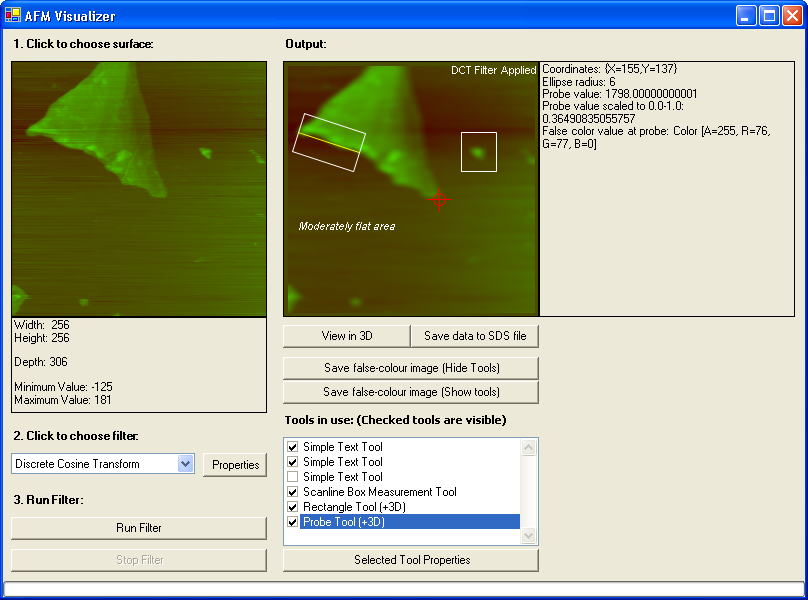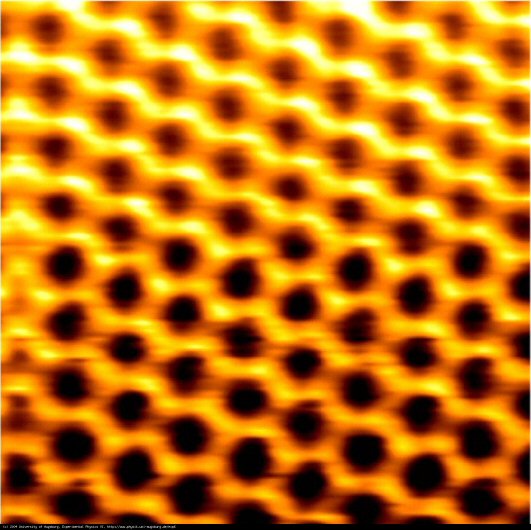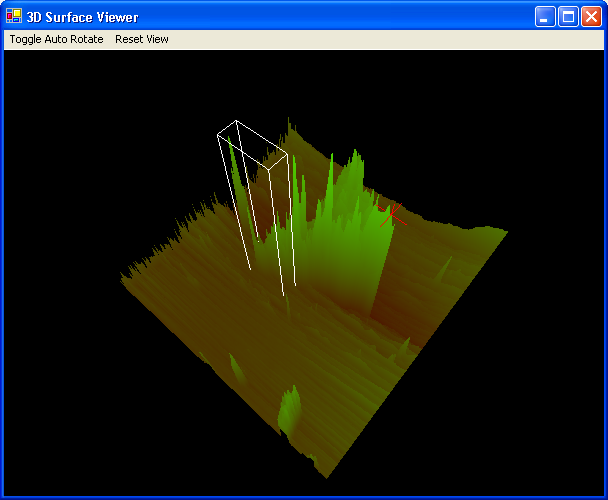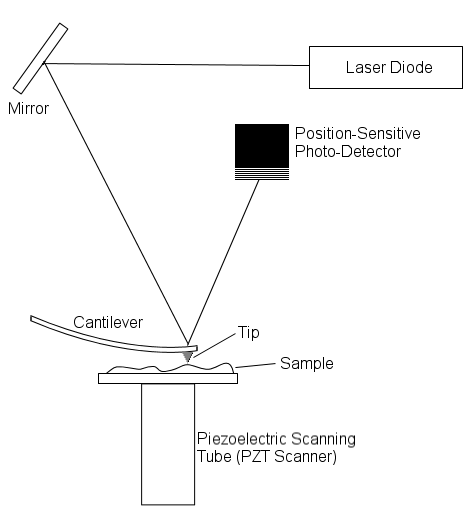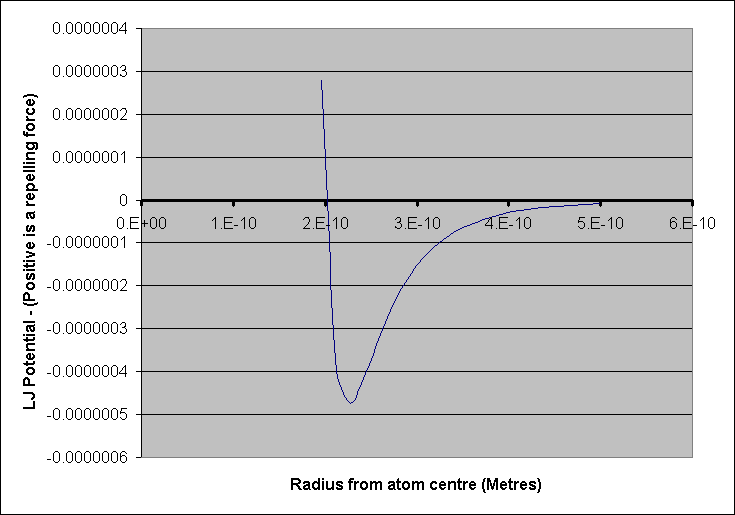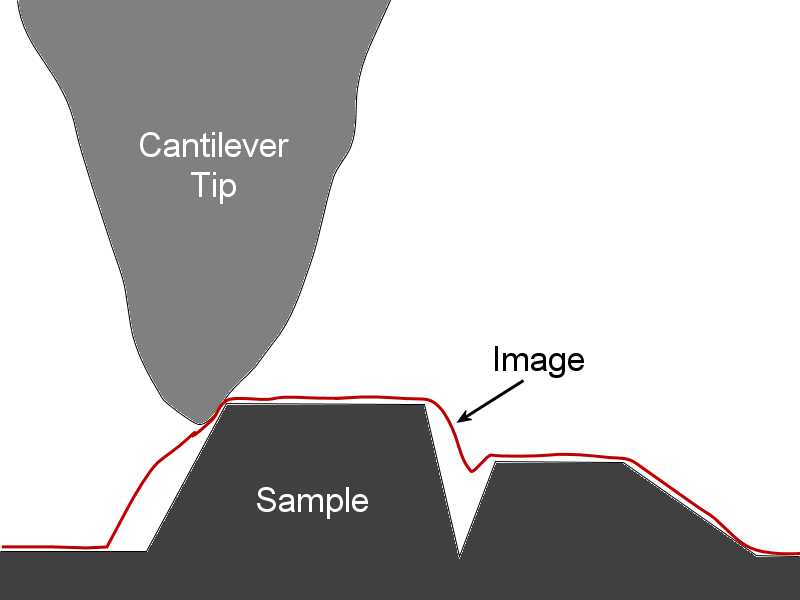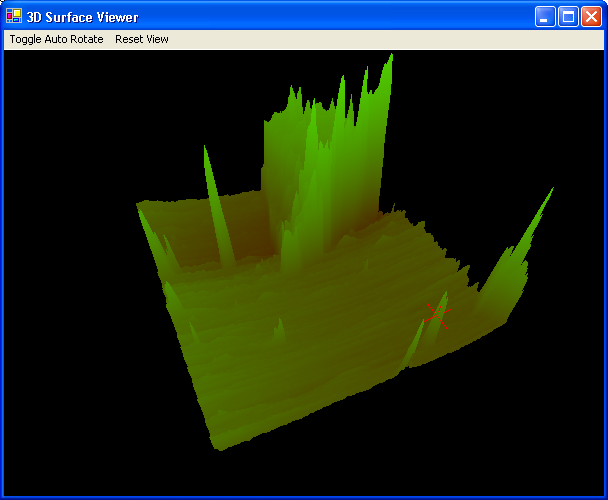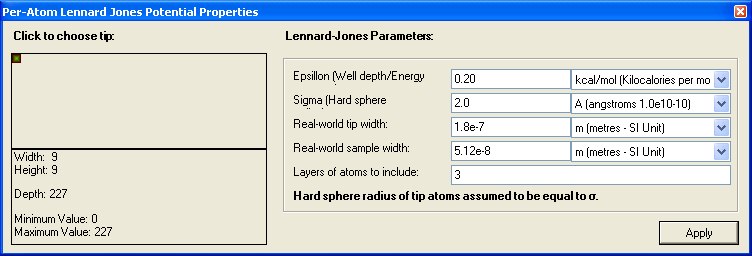AFM Distortion Simulator
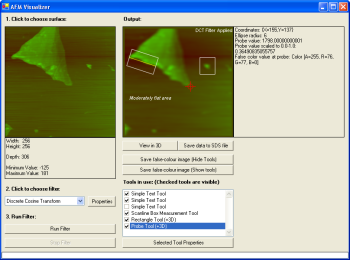
A tool for simulating inter-atomic effects within AFM systems
Language: C#
Technology: Atomic force microscopy
This application is used to simulate distortion caused my tiny inter-atomic effects within "AFM" microscopes. AFM microscopes, instead of using light, use a rod with a extremely sharp tip to feel the shape of an object. AFM is extremely accurate, and the shape of individual atoms can be detected.
This was my final project for my MSc at The University of Manchester.
Abstract:
Atomic Force Microscopy (AFM) is a method for measuring the topological displacement of a microscopic surface.
To create a displacement map of the surface, a cantilever with a very sharp tip is moved over the surface, while measuring the cantilever's vertical displacement. The surface position is adjusted horizontally to ensure the tip does not scratch through the material.
An important problem in AFM is that the tips are never perfect so the output image is subject to error and distortion. For reasons described in this document, the nature of the contact means that it is often impossible to remove this distortion. This makes surface analysis more difficult as researchers may be unsure whether the source of a particular surface feature is due to the underlying surface topology or a distortion due to an imperfect tip.
This work proposes and documents the development of an application that can be used to simulate the distortion effects caused by the interaction of the tip and the sample. This allows researchers to investigate a wide variety of tip-surface combinations to visually examine the kinds of distortion caused in order to derive the origin of the surface features. A selection of tools such as a probe and an area tool have been implemented to allow data extraction from the output surface, and new tools may be added easily to the application.
To aid the analysis process, a 3D representation of the output was added to the application, allowing a researcher to see the surface from an angle of their choosing. This surface can be analysed quantitatively with the application's extensible toolset.
With the successful completion of this application, it was extended to allow user-defined distortion filters to be added to the application, simulating any phenomena required. Not limited to AFM, this is of great use to other measurement systems subject to distortion effects such as optical or magnetic microscopy.
Resources
25.5 KB - doc file
808 KB - doc file
294.5 KB - zip file
26 KB - xls file

